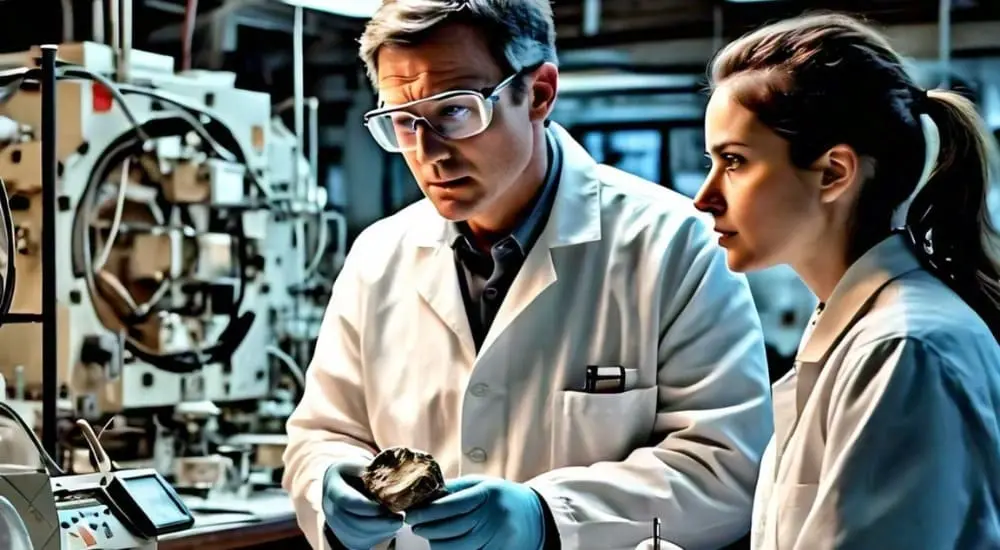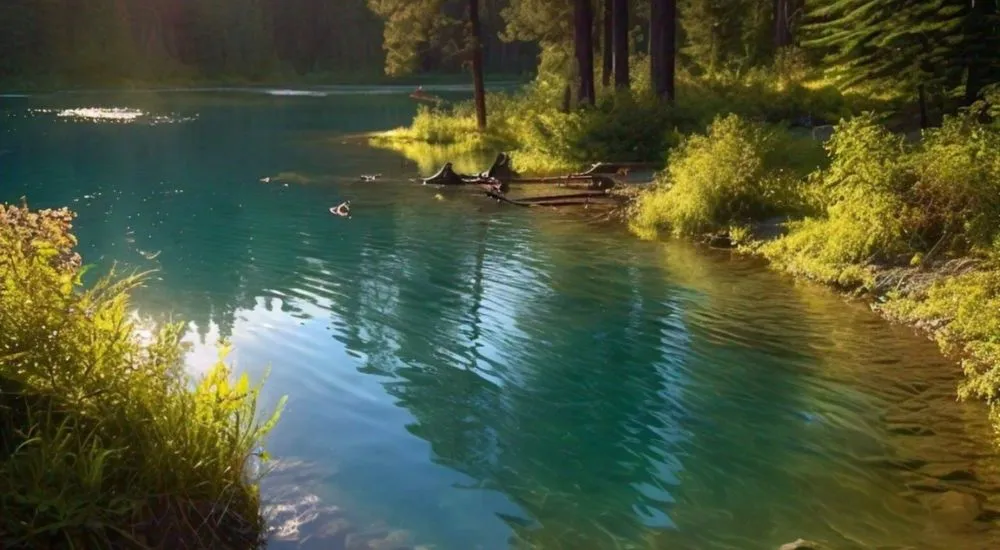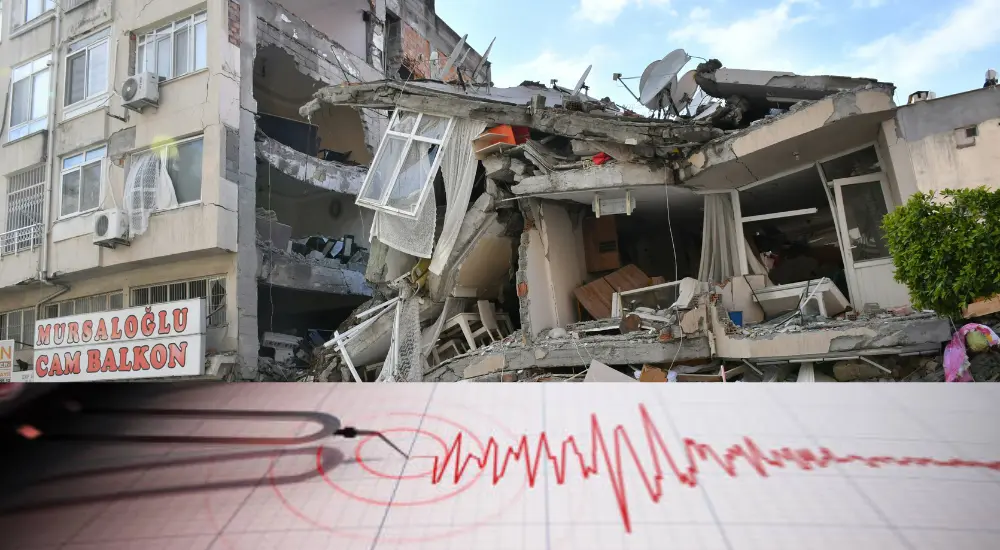16. What is the principle behind the Rubidium-Strontium dating method?
(A) The decay of Rubidium-87 to Strontium-87
(B) The decay of Strontium-87 to Rubidium-87
(C) The formation of Rubidium-87 from Strontium-87
(D) The formation of Strontium-87 from Rubidium-87
(A) The decay of Rubidium-87 to Strontium-87
Explanation: The Rubidium-Strontium dating method is based on the radioactive decay of Rubidium-87 to Strontium-87, which is used to date rocks and minerals.
17. Why is it important to use a closed system when performing radiometric dating on rocks?
(A) To ensure no loss or gain of parent or daughter isotopes
(B) To allow isotopes to escape and enter the rock
(C) To maintain constant temperature
(D) To increase the rate of radioactive decay
(A) To ensure no loss or gain of parent or daughter isotopes
Explanation: A closed system is essential in radiometric dating to ensure that the rock sample has not lost or gained parent or daughter isotopes, which would otherwise affect the accuracy of the dating.
18. What is the half-life of Uranium-238?
(A) 5730 years
(B) 1.3 billion years
(C) 4.5 billion years
(D) 10,000 years
(C) 4.5 billion years
Explanation: The half-life of uranium-238 is approximately 4.5 billion years, making it suitable for dating the oldest rocks on Earth.
19. Which radiometric dating method is suitable for dating volcanic ash layers?
(A) Radiocarbon dating
(B) Potassium-argon dating
(C) Fission track dating
(D) Dendrochronology
(B) Potassium-argon dating
Explanation: Potassium-argon dating is suitable for dating volcanic ash layers because it measures the decay of Potassium-40 to Argon-40, which is trapped in the volcanic minerals.
20. What is an isochron in the context of radiometric dating?
(A) A graph that shows the change in temperature over time
(B) A graph that plots the ratio of parent to daughter isotopes to determine the age of a sample
(C) A method for measuring isotopic abundances
(D) A type of radioactive decay
(B) A graph that plots the ratio of parent to daughter isotopes to determine the age of a sample
Explanation: An isochron is a graph used in radiometric dating to plot the ratio of parent to daughter isotopes, helping to determine the age of a rock sample by eliminating the need for knowledge of the initial amount of daughter isotope.
21. What does the term “half-life” refer to in radiometric dating?
(A) The time it takes for half of the parent isotope to decay into the daughter isotope
(B) The time it takes for a rock to form
(C) The time it takes for a mineral to crystallize
(D) The time it takes for an isotope to disappear completely
(A) The time it takes for half of the parent isotope to decay into the daughter isotope
Explanation: In radiometric dating, the half-life is the time required for half of the parent isotope in a sample to decay into its daughter isotope, which is a key concept in determining the age of rocks.
22. Which isotope is commonly used in the dating of ancient geological events, such as the formation of the Earth?
(A) Carbon-14
(B) Uranium-235
(C) Potassium-40
(D) Rubidium-87
(B) Uranium-235
Explanation: Uranium-235 is commonly used in dating ancient geological events, such as the formation of the Earth, because of its long half-life and presence in many rocks and minerals.
23. What type of rocks are typically dated using the Potassium-Argon method?
(A) Sedimentary rocks
(B) Metamorphic rocks
(C) Igneous rocks
(D) Organic materials
(C) Igneous rocks
Explanation: The potassium-argon method is typically used to date igneous rocks because these rocks contain minerals that trap potassium-40, which decays to argon-40 over time.
24. Why is it important to know the initial amount of the daughter isotope when using radiometric dating?
(A) To calibrate the dating method
(B) To estimate the temperature at which the rock formed
(C) To calculate the accurate age of the rock
(D) To determine the rock’s chemical composition
(C) To calculate the accurate age of the rock
Explanation: Knowing the initial amount of the daughter isotope is important in radiometric dating to accurately calculate the age of the rock, as it allows for the correction of any pre-existing daughter isotopes.
25. Which method of radiometric dating is used to date the age of the Earth?
(A) Carbon-14 dating
(B) Uranium-lead dating
(C) Potassium-argon dating
(D) Luminescence dating
(B) Uranium-Lead dating
Explanation: Uranium-Lead dating is used to date the age of the Earth due to its ability to date very old rocks and minerals, providing estimates of Earth’s formation at about 4.5 billion years ago.
26. What is the significance of radiometric dating in understanding geological time scale?
(A) It helps in determining the physical properties of rocks
(B) It provides precise and absolute ages for geological events
(C) It helps in finding fossil fuels
(D) It explains the chemical composition of minerals
(B) It provides precise and absolute ages for geological events
Explanation: Radiometric dating is significant because it provides precise and absolute ages for geological events, helping to construct accurate geological time scale.
27. Which radiometric dating method uses the decay of Samarium-147 to Neodymium-143?
(A) Carbon-14 dating
(B) Uranium-Lead dating
(C) Potassium-Argon dating
(D) Samarium-Neodymium dating
(D) Samarium-Neodymium dating
Explanation: The Samarium-Neodymium dating method uses the decay of Samarium-147 to Neodymium-143, which is useful for dating ancient rocks and meteorites.
28. What is the purpose of using multiple radiometric dating methods on the same rock sample?
(A) To increase the cost of the analysis
(B) To provide cross-validation and increase accuracy
(C) To speed up the dating process
(D) To determine the rock’s colour and texture
(B) To provide cross-validation and increase accuracy
Explanation: Using multiple radiometric dating methods on the same rock sample provides cross-validation and increases the accuracy and reliability of the age determination.
29. Which radiometric dating method is best suited for dating very young geological materials, such as recent volcanic eruptions?
(A) Carbon-14 dating
(B) Uranium-lead dating
(C) Argon-argon dating
(D) Fission track dating
(C) Argon-argon dating
Explanation: Argon-argon dating is best suited for dating very young geological materials, such as recent volcanic eruptions, due to its high precision and ability to date events from a few thousand to several billion years ago.
30. Why is fission track dating useful for dating certain types of minerals in rocks?
(A) It measures the magnetic properties of the minerals
(B) It records the damage trails (tracks) left by fission fragments in minerals
(C) It assesses the thermal history of the rocks
(D) It analyses the rock’s optical properties
(B) It records the damage trails (tracks) left by fission fragments in minerals
Explanation: Fission track dating is useful for dating certain types of minerals in rocks because it records the damage trails (tracks) left by fission fragments, which can be counted to determine the age of the sample.










